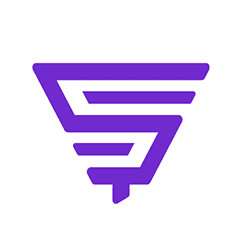To align talent teams with talent strategies for 2024, The State of Recruitment Marketing in 2024 report delves into every facet of the recruitment funnel — from awareness and connection to qualification and retention. This data-rich analysis offers a comprehensive view of challenges, opportunities, and future priorities for leading talent teams. Drawing insights from a survey encompassing over 450 HR and TA leaders, our four-part blog series dissects each stage, offering actionable strategies to stay ahead.
Related: If you missed it, catch up on parts one, two, and three.
Let's delve into the final installment, the state of talent retention in 2024.
The state of boosting talent retention
Finding and hiring the right employees is critical, but retaining them is just as important. After all, replacing talent is often more expensive than retaining talent.
SHRM reports that costs associated with employee turnover can range from 90 to 200 percent of the employee’s annual salary. While there are many ways — pulse survey, satisfaction score, recognition, and absenteeism, to name a few — to gauge employee engagement and help predict retention rates, average tenure is often the North Star metric.
2024 trend data from Forbes indicates that employees aged 55 to 64 have an average tenure of 9.9 years, while employees 25 to 34 have an average tenure of only 2.8 years. If this trend continues as younger generations of employees enter the workforce, talent teams must consider unique strategies to keep these employees engaged and retained.
According to the latest report by the Bureau of Labor Statistics (BLS), the quit rate (2.1%) as of January 2024 is the lowest since August 2020.
These data points urge talent acquisition and human resource pros to focus on talent retention. The good news is that plenty of recruitment resources and technologies help your teams trigger their retention strategies.

Recruitment technology powers talent retention
With the right retention strategies and technologies, you can create more opportunities for employees to become loyal brand advocates who choose to grow with your organization.
Activate your internal network with tools, resources, and inspiration for employees to embrace and evangelize the company brand and value proposition, seek out opportunities for career growth, and contribute to the company's overall success.
The top recruitment technology trends surrounding talent retention include:
- Increase retention rates with talent assessments. 53% of VPs cite increased retention rates as a benefit of implementing assessments.
- Lower recruiting costs while boosting retention with referral programs. 86% currently have an employee referral program.
- Promote internal mobility to increase retention. 70% of organizations use an internal career site to communicate open positions to existing employees.
Unleash talent potential through talent assessments
Maximize the talent potential within your company by evaluating existing skills and competencies and creating a path for career development and retention via talent assessments.
53% of VPs cite increased retention rates as a benefit of implementing assessments. However, finding, screening, and hiring top talent in a competitive market is a challenge for many recruiting teams. Talent assessments can streamline hiring by providing a structured framework for evaluating candidates. This can help recruiters and hiring managers save time by quickly identifying top candidates and focusing their efforts on the best fit for the role.
Symphony Talent's Talent Assessments solution enables organizations to understand their talent and align it to the right roles within the organization both pre- and post-hire, helping to improve employee satisfaction and increase retention. Clients interviewed reported a 5% reduction in employee turnover.
Related: Learn more about talent assessments in part three of the series.
Boost retention rates with effective employee referral programs
Hiring for role-based skills, growth potential, and cultural fit helps to reduce turnover and improve retention rates. Another great strategy to help lower recruiting costs and drive retention is employee referral programs.
Employees know what it takes to excel within an organization … and who in their network would get the job done well. Well-designed and well-managed referral programs empower your best employees to leverage their networks to bring in other top performers, ultimately encouraging them to stay longer and continue to do good work.
An effective referral program can help talent teams:
- Source right-fit hires through the employee network.
- Lower overall recruiting costs.
- Expand the talent network.
- Improve employee engagement and retention.
Related: Learn more about employee referral programs here.
Make it easy for employees to grow within your organization
Assessments, often underused post-hire, can be a great tool to help bolster retention rates. Because of today’s challenging market conditions and the cost of filling skilled jobs, organizations build an internal mobility strategy that leverages post-hire assessments to surface employees’ known and unknown skills.
Marketing open positions to your employee network is as important as marketing to your external candidate network. In fact, 96% of organizations have an internal mobility strategy. Determining the best channels to promote internal opportunities for mobility is vital.
Internal mobility sites allow talent teams to deliver meaningful content that drives employee engagement and advocacy and creates a home base for internal career opportunities.
Top three benefits of internal mobility sites:
- Address staffing and skills gaps internally. Staffing and skills gaps are a persistent concern across industries, but talent teams may not need to look far to fill them. By providing a pathway for internal career mobility, those gaps can be filled with ease.
- Amplify employer brand and value proposition. Deliver a clear and consistent brand story across all channels throughout the talent journey – from candidate to co-worker and beyond. Create brand champions who grow within your company for years to come.
- Gain greater talent visibility. With seamless integration with your CRM, talent teams can ensure full visibility into the existing talent pool and identify opportunities for better resource allocation.
Here are some internal mobility tips:
- Communicate your policy on internal mobility throughout the company, encouraging lateral moves and cross-department projects.
- Give internal applicants the same, if not more, credence as external candidates.
- Make sure your internal career website is attractive and accessible. A high-quality internal mobility site demonstrates your commitment to employees and their growth.
- Map the skills of your current employee base for future reference.
- Use assessments to ensure right fit for growth post-hire and as a guide to track career growth.
- Ensure that people leaders have regular career development conversations with their direct reports.
Above all, if you want your internal mobility programs to thrive, your company has to be transparent and upfront about promoting them. As challenging as it is to find the right talent, retaining and developing them once they’re on the job is even more essential.
Related: Learn how to activate your internal recruitment engine with internal mobility.
Retention outcomes
Talent acquisition extends beyond hiring to include employee engagement, career development, and retention. Employees increasingly prioritize employers who offer clear career growth opportunities and a strong employer brand. An organization willing to identify skill gaps and then develop and reposition employees into emerging roles will reap the benefits in the long term.
Watch our engagement and retention fireside chat, where we discuss key barriers to employee engagement and retention and the solutions and best practices you need to break them down.
Want to show your employees a path for growth and watch them thrive? Learn more about talent retention here.


